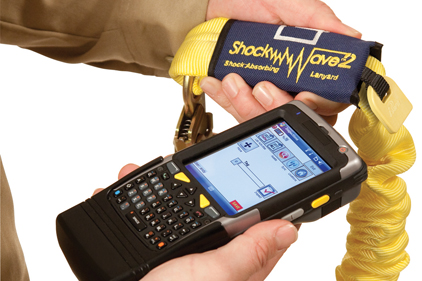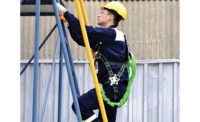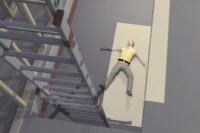Radio-frequency identification (RFID) technology, once used to track nuclear missiles, shipping containers and even livestock, has evolved into a smart solution for managing safety equipment. By using radio waves to transmit data from identification tags on a piece of equipment to a handheld device, RFID technology offers automatic identification and tracking. Now, companies that choose RFID technology can streamline their process of tracking and logging equipment, improving workers’ safety on the job.
As many fall protection manufacturers embrace the RFID trend, a great deal of equipment now comes with RFID chips embedded as a standard feature. This an important factor to take into consideration when researching and purchasing fall protection equipment.
For example, some fall protection products are delivered from the factory already RFID-enabled. Built-in tags are pre-registered into a database and include photos, model type and manufacturing information. As a result, inspection orders, findings and asset status can be easily uploaded and tracked to enhance compliance and to help safety programs run easily and more efficiently. Safety gear that has a built-in RFID system ready for use provides the following benefits:
— More efficient tracking and reporting capabilities. Companies often overlook the need to regularly track and report on the condition of fall protection equipment. However, workers’ safety and well being depends on regular inspections to ensure equipment is approved for use. The RFID system ensures that the equipment each worker receives is compliant with all applicable safety standards and regulations and has been inspected on-schedule. Because an RFID tracking system eliminates the hassle of pen-and-paper recording and handwritten notes, companies can experience approximately a 35 to 50 percent improvement in time-savings by using the system.
— Easy, on-site material asset management. A typical RFID system for fall protection equipment is comprised of RFID tags, PDA readers and a Web portal or PC/Network-based software that work in unison to provide data for a given product, including make and model type, inspection records, and jobsite and worker assignment. The personalized software can provide further information including user manuals, inspection checklists, training records, industry regulations, product advisories and other useful tools.
— Simpler safety inspection data management. By electronically storing information, inspection records that are usually filed away can be recalled at a moment’s notice when inspections occur. With no working time lost as managers search for documented records, productivity remains high. In essence, RFID technology saves companies time, money and unnecessary stress.
Even if you are already taking advantage of RFID technology, it is your responsibility to ensure you have the most advanced, up-to-date system that will not only simplify the inspection process, tracking and checking of inventory, and managing of a safety program, but will keep your workers compliant and safe. Remember, your RFID technology system should do all the hard work, so you don’t have to. To get the most out of your system, look for:
— Systems that offer a due-diligence report, keep track of inspection logs for product reliability and safety, and verify compliance
— RFID technology with standard and customizable inspection checklists to ensure more consistent inspections with detailed notations, photos and inspection status
— Systems that advise site managers of upcoming or overdue inspections
— Inventory control that tracks inventory on the jobsite and helps prevent theft
— Information management that provides technical support and instant access to key information
— Systems that meet your company’s storage needs. Do you want an external provider to host RFID related data, or would you prefer to use your own computers or network server?
If your workers use fall protection equipment that does not have embedded RFID tags, and was produced before this technology was available, retrofitting kits can help. Retrofitting kits are widely available for all types of equipment, regardless of brand, to extend the benefits of RFID technology to an existing inventory. To start electronic recordkeeping with a retrofitting kit, the tag is simply attached to the piece of equipment and the user is prompted to enter the model number, make and date of manufacture.
At the click of a mouse, RFID technology enables equipment tracking, equipment compliance and most importantly, worker safety. Among the wealth of benefits RFID provides, it’s no wonder most fall protection manufacturers are choosing to embed RFID tags in standard equipment and develop their own RFID safety systems. Moving forward, it will be continually important for companies to ensure their RFID systems are tailored for the distinct needs of those who rely on their fall protection equipment every day.






